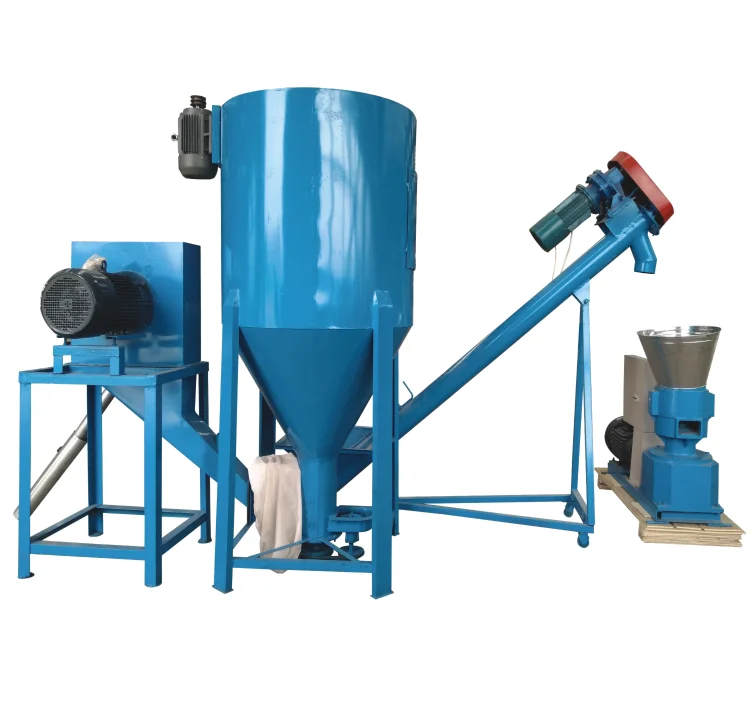feed grain mixer
12 月 . 26, 2024 18:41 Back to list
feed grain mixer
Understanding Feed Grain Mixers A Key Component in Animal Nutrition
In the agricultural and livestock industries, the importance of high-quality feed cannot be overstated. A significant element in ensuring optimal nutrition for livestock is the feed grain mixer, a device designed to blend various feed ingredients thoroughly. This article will explore the function, benefits, and types of feed grain mixers, highlighting their role in enhancing livestock health and productivity.
What Is a Feed Grain Mixer?
A feed grain mixer is a specialized machine used to combine different types of feed ingredients, such as grains, vitamins, minerals, and by-products, into a homogeneous mixture. This equipment is crucial in animal husbandry since most animals require a balanced diet to grow, reproduce, and produce high-quality products, such as milk and meat.
Feed mixers come in various designs, including horizontal and vertical mixers, each suited for different scales of operation and types of feed. Horizontal mixers have a long cylindrical shape, allowing for efficient mixing of larger batches, while vertical mixers are taller and more compact, suitable for smaller operations. Regardless of style, the primary purpose of these mixers remains the same to ensure that each ingredient is evenly distributed throughout the final feed product.
Importance of Mixing Feed Ingredients
The quality of animal feed directly influences animal health, growth rates, and feed conversion efficiency. Inconsistent or poorly mixed feed can lead to nutritional imbalances, which may result in health issues, stunted growth, and overall poor performance in livestock. For instance, mixing grains with protein supplements like soybean meal or canola meal into a balanced ration ensures animals get the necessary nutrients.
Additionally, mixing helps in reducing the segregation of ingredients. Over time, ingredients can settle or separate, particularly if they vary significantly in size or weight. A well-designed feed mixer minimizes this issue, ensuring that each batch of feed provides a consistent nutrient profile, allowing farmers to maintain better control over their livestock’s dietary intake.
Benefits of Using a Feed Grain Mixer
1. Improved Uniformity One of the most significant advantages of using a feed grain mixer is the uniform distribution of nutrients. Animals fed a well-mixed ration are more likely to receive consistent nutrition compared to those fed loose or poorly mixed feed.
feed grain mixer

2. Enhanced Feed Efficiency Properly mixed feed can lead to improved feed conversion ratios, meaning animals grow faster and produce more with less feed. This can significantly impact profitability for livestock producers.
3. Cost-Effectiveness While the initial investment in a feed grain mixer may be significant, the long-term savings associated with improved feed efficiency and livestock productivity can make it a wise investment for any farm operation.
4. Flexibility Feed mixers allow farmers to customize their feed formulations based on specific nutritional requirements, seasonal ingredient availability, and market demands. This flexibility is particularly valuable in adapting to various livestock needs.
5. Reduction of Waste A well-mixed feed reduces the likelihood of feed waste, ensuring that more of the feed provided to livestock is consumed and utilized for growth or production.
Types of Feed Grain Mixers
Various feed mixers are available on the market, each designed for specific needs and operations. Some common types include
- Horizontal Mixers Ideal for larger operations, these mixers can handle high volumes and are known for their mixing efficiency. - Vertical Mixers These compact mixers are suitable for smaller farms and can effectively mix smaller batches of feed. - Batch Mixers Designed for specific quantities, these mixers are suitable for farms needing flexibility in feed formulations. - Continuous Mixers These mixers operate on a continuous basis, making them well-suited for large-scale feed manufacturing.
Conclusion
Feed grain mixers play a vital role in the livestock industry, facilitating the preparation of balanced, nutritionally adequate diets for animals. By ensuring that feed ingredients are mixed uniformly, these machines contribute to improved animal health, enhanced productivity, and overall farm profitability. As the agricultural sector continues to evolve, the importance of such equipment will likely grow, emphasizing the need for livestock producers to adopt innovative solutions to meet the demands of modern farming. Investing in a feed grain mixer is not just an option; it is a critical step towards sustainable and efficient animal husbandry.
-
school
NewsJul.10,2025
-
Vacuum Packing Machine - Efficient & Reliable Vacuum Packaging Solutions for Food & Industrial Use
NewsJun.10,2025
-
High-Quality European Rabbit Cage Durable Welded Rabbit Cage Wire Mesh Supplier
NewsJun.10,2025
-
High-Efficiency Air Inlet Window for Optimal Poultry Ventilation & Cooling
NewsMay.30,2025
-
High-Efficiency Evaporative Cooling Pads Durable & Energy-Saving
NewsMay.30,2025
-
Automatic Egg Collecting Machine High-Efficiency Poultry Farm Solutions
NewsMay.29,2025






